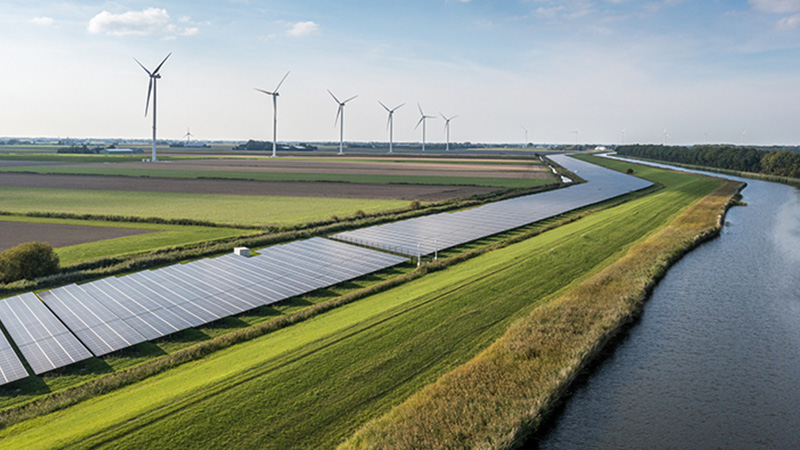In the 16 years since the first iPhone hit the shelves, the world has changed significantly. The volume of data created, captured, copied and consumed worldwide is now measured in zettabytes (one zettabyte being 10,000 trillion bytes, or around one trillion gigabytes), and has grown from only 1ZB created in the whole of human history in 2010 to around 120ZB now, forecast to grow to approximately 180ZB over the next two years, largely driven by the hugely data-hungry growth of artificial intelligence (AI), according to data from Statista.
But while these numbers illustrate the rapid growth of the virtual world, Gravis, which manages the VT Gravis Digital Infrastructure Income Fund (launched in 2021) says that physical assets are key to tapping into the ‘fourth industrial revolution’, a term coined in the last decade to describe the changes to technology, industries, and societal patterns and processes in the 21st century due to increasing interconnectivity and smart automation.
See also: Three top investment trust picks in the specialist sectors
Fund manager Matt Norris explains that new technologies have changed our lives on many levels: since the pandemic, work now happens in different settings, with hybrid working – home, office and online – facilitated by data centres and digital networks; play is moving increasingly into streaming of content and services like TikTok, requiring more and better telecom towers and 5G networks; and everyday life has been made easier by the rise of e-commerce, which is supported by ever-more automated fulfilment centres as well as out-of-town and urban logistics warehouses.
“The digital economy now makes up approximately 8% of US GDP and growing, and that does not even include the rent paid for data centres, telecom towers and e-commerce infrastructure,” says Norris.
Nick Scullion, a partner at Foresight Group, which manages the FP Foresight Global Real Infrastructure Fund, is another fan of the theme. Digital infrastructure now makes up around 20% of the fund’s portfolio, a significant increase from 5% only 18 months ago. “From an infrastructure investment perspective, the digital segment is quite compelling, driven by secular tailwinds,” he says. “5G, working from home, cloud computing and AI all require denser networks, more fibre, cell towers and data centres, so there is increased demand for existing as well as new assets.”
Both managers point to the defensive characteristics of physical infrastructure as providing a less volatile and more income-orientated way of gaining exposure to the theme of rapid technological change. Telecom towers tend to have low maintenance capex, rents that are either inflation-linked (in Europe) or on a fixed annual escalator (in the US), and each additional dish on a tower can generate super-normal profits. Data centres tend to benefit from long leases, and supply constraints lead to superior income generation.
See also: A deep dive into the most popular investment trusts of H1 2023
Meanwhile, Norris says urban logistics is one of the highest-growth areas: in recent decades, warehouse space in cities has been converted into residential accommodation, so a lack of supply combined with growing demand for last-mile distribution means prices in the sector remain high even in an environment of rising bond yields. Norris further points out that the Gravis fund’s holdings tend to have low leverage, so while the cost of debt will go up with rising interest rates, strong demand means that asset owners can grow rents ahead of costs.
“This is growth income, not fixed income,” he says, pointing to 5% yields and 10-year-plus records of year-on-year dividend growth among some of the fund’s largest holdings. American Tower, a recent purchase in the Foresight fund, has grown its dividend by 17.5% in the past five years; a 27% fall in its share price over the past 12 months provided a favourable entry point to a company that Scullion says is “quite compelling given the valuation, earnings growth and demand for the type of infrastructure they own”.
Perhaps unsurprisingly, the two fund managers both argue that active management is key to benefiting from the structural trends in digital infrastructure. (There are also two actively managed closed-ended digital infrastructure funds available in the UK, Digital 9 Infrastructure and Cordiant Digital Infrastructure.) But looking at the passive options on offer, they may have a point for investors who want pure exposure to the sector.
See also: Nasdaq ‘steals the show’ as tech dominates performance in first half of 2023
There are two easily available digital infrastructure ETFs: the HANETF Digital Infrastructure and Connectivity ETF and the GlobalX Data Centre REITs and Digital Infrastructure ETF. While both have some crossover with the kind of stable, income-generating physical assets favoured by the Gravis and Foresight funds, they also feature significant exposure to chipmakers, payment ‘infrastructure’ (such as Visa and MasterCard), where revenues are transactional rather than predictable, and which may perform more in line with the broader technology sector.
While this may be no bad thing in itself, investors should be aware that ‘digital infrastructure’ can mean different things to different fund providers.










